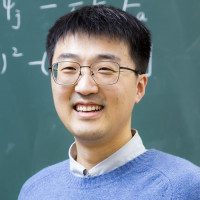Identifying Lightning Structures and Predicting Cloud Properties
- Date
- June 18 (Wed) 15:00 - 16:00, 2025 (JST)
- Speaker
-
- Lingxiao Wang (Research Scientist, Division of Fundamental Mathematical Science, RIKEN Center for Interdisciplinary Theoretical and Mathematical Sciences (iTHEMS))
- Venue
- Seminar Room #359 (Main Venue)
- via Zoom
- Language
- English
- Host
- Lingxiao Wang
This third talk in the DEEP-IN series focuses on using unsupervised machine learning to identify and predict patterns in atmospheric phenomena. We begin by demonstrating how clustering and dimensionality reduction techniques can uncover coherent lightning patterns from high-dimensional LOFAR (LOw Frequency ARray) data, offering insight into large-scale organization. We then show how generative diffusion models enable super-resolution retrieval of cloud properties for all day from satellite observations.
This is an informal seminar, we will start with the methodology and some practical examples, and finally reserve time for everyone interested to discuss it together.
References
- L. Wang, B. M. Hare, K. Zhou, H. Stoecker, and O. Scholten, Identifying lightning structures via machine learning, Chaos, Solitons & Fractals 170, 113346 (2023), doi: 10.1016/j.chaos.2023.113346
- H. Xiao, F. Zhang, L. Wang, W. Li, B. Guo, and J. Li, CloudDiff: Super-Resolution Ensemble Retrieval of Cloud Properties for All Day Using the Generative Diffusion Model, (2024), arXiv: 2405.04483
- H. Xiao, F. Zhang, R. Zhang, F. Lu, M. Cai, and L. Wang, Retrieval of total precipitable water under all-weather conditions from Himawari-8/AHI observations using the generative diffusion model, (2025), doi: 10.22541/au.173748287.72657559/v1
This is a closed event for scientists. Non-scientists are not allowed to attend. If you are not a member or related person and would like to attend, please contact us using the inquiry form. Please note that the event organizer or speaker must authorize your request to attend.

